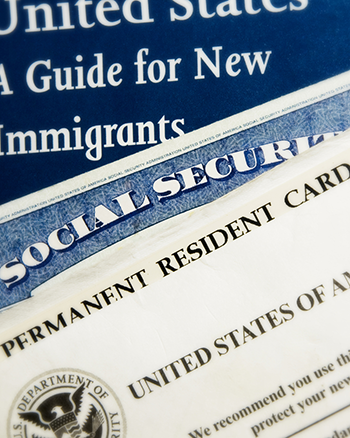What Is the Difference Between Conditional Lawful Permanent Residence and Lawful Permanent Residence?

Conditional lawful permanent residents are a subset of lawful permanent residents.
A lawful permanent resident is entitled to live and work in the United States without restriction. A lawful permanent resident also may apply for United States citizenship (naturalization) after several years.
Conditional lawful permanent residents are also entitled to live and work in the United States. However, USCIS (United States Citizenship and Immigration Services) will audit the conditional lawful permanent resident after the first two years of lawful permanent residence. If the conditional lawful permanent resident passes the audit, the person becomes a full lawful permanent resident. If the conditional lawful permanent resident fails the audit, the lawful permanent resident status is revoked and the person will be referred to immigration court for removal (deportation).
How can I tell if I am a conditional lawful permanent resident?
Both lawful permanent residents and conditional lawful permanent residents are given permanent resident cards (green cards) with expiration dates. A lawful permanent resident without conditions is given a green card that is valid for ten years. A conditional lawful permanent resident’s green card is valid for two years.
The renewal process for a ten year card is usually routine, unless the lawful permanent resident has a criminal record. The renewal process for a conditional lawful permanent resident is an audit.
Why are conditional lawful permanent residents audited?
There are two types of conditional lawful permanent residents:
- Immigrant investors and their family members (EB-5).
- Some immediate relatives of United States citizens (newlyweds and any stepchildren of a United States citizen).
USCIS is required to audit these two groups by law. EB-5 immigrant investors are audited to ensure that the investor invested the money and that the investment has created ten new jobs for American workers.
Family-based immigrants are audited when the couple has been married for less than two years. Typically, this only affects spouses and stepchildren of United States citizens.
When does the audit take place?
A conditional lawful permanent resident has to file an application to remove the conditions on residence within the last 90 days before the conditional lawful permanent resident card (green card) expires. If this application is not filed, the conditional lawful permanent resident’s status automatically terminates.
USCIS can take a long time to complete an audit. While the audit is pending, USCIS issues temporary evidence of the conditional lawful permanent resident’s status, because the person continues to be a lawful permanent resident. A conditional lawful permanent resident can stay in the United States, can travel internationally, and continues to accrue time towards eligibility for United States citizenship while the audit is pending.
What happens at the end of the audit?
If the conditional lawful permanent resident passes the audit, the conditions are removed and the person is now a lawful permanent resident. A new card will be issued and this card will be valid for ten years.
If the conditional lawful permanent resident does not pass the audit, USCIS revokes the lawful permanent resident status and places the person in removal proceedings for deportation. The person can renew the application to remove conditions on residence in front of the immigration judge as a defense against deportation.

